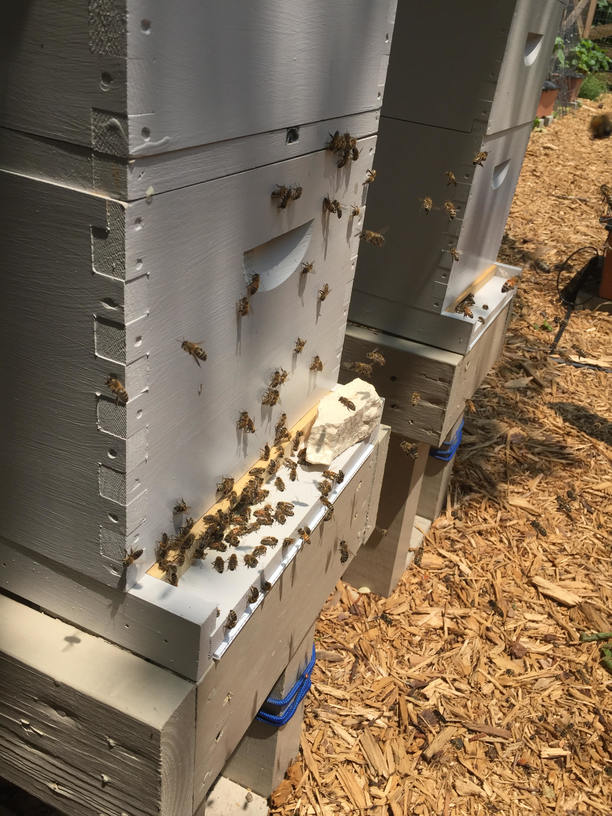I have always been intrigued by honey bees. I’m not sure if it’s because of the grace they show when collecting pollen and nectar, the stinger they use as a last resort to protect their “peeps” or if it’s because they are responsible for pollinating a large portion of our food supply. Whatever the reason I decided to become a beekeeper this spring. This was an extremely challenging undertaking but at the same time it was one of the most rewarding and therapeutic things I’ve ever done.
To get off the ground I did a TON of reading last winter. Nucs, supers, bottom boards, bee varities, mites were terms that were complete jibberish when I started learning but by spring I had a pretty clear understanding of how everything fits together. To give myself the best chance to succeed I decided to start with two nucleus’s (nucleus’s are small starter bee colonies) of Russian honey bees from Carl & Virgina Webb. Russian bees have been dealing with chaos for hundreds of years and they’ve evolved over time to deal with various threats (Varroa for example) that some other bee varieties haven’t.
Honey bees live in trees, crevasses, walls, etc. in nature. Beekeepers try to mirror this environment with bee hives. Hives (this post only targets Langstroth hives) consist of entrance reducers, bottom boards, supers, top boards, tops and frames. I purchased my hive components from Brushy Mountain bee farm and was extremely impressed with their quality and customer service. When you combine the hive and bees you get a happy little honey bee family:

This was my first year and I found out a lot of things the hard way. Luckily I had a TERRIFIC mentor (Thanks Linda!) who educated me and helped get me out of a few jams. My colonies went into winter looking strong and I’m hopeful they will make it through winter unharmed. 2017 is going to be buzzzzing with excitement and I’m looking forward to my bees teaching me more about life, patience and appreciating the little things. And of course there is the honey. :)